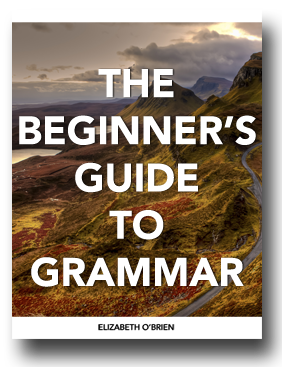📘 Download your free grammar guide here. 📘
📘 Download your free grammar guide here. 📘
What are helping verbs & verb phrases?
What are helping verbs & verb phrases?
Helping verbs (auxiliary verbs) do just what their name implies. They help the main verb in the sentence by telling more about the verb's tense, mood, and voice.
Main Verbs, Helping Verbs, & Verb Phrases
There are many, many verbs that can function as main verbs (walk, run, think, say, sleep, seem etc.), but there are only a handful of verbs that can function as helping verbs.
List of Helping Verbs
be, am, is, are, was,
were, been, being, have, has, had,
could, should, would, may, might,
must, shall, can, will, do, did, does, having
When we put one or more helping/auxiliary verb with a main verb, we get what is called a verb phrase.
(Every sentence needs to have at least one main verb, but not every sentence needs a helping/auxiliary verb.)
|
Helping Verb(s) |
+ Main Verb |
= Verb Phrase |
|
could |
eat |
could eat |
|
could have |
eaten |
could have eaten |
|
might have been |
listening |
might have been listening |
Before we move on, I need to tell you something important. Are you ready? Good! The verbs on that list above can function as helping verbs. That wording is very important because some of those words can also function as main verbs. Let's look at an example using the word was.
|
I was sleeping during the football game. |
Was sleeping is a verb phrase. Was is a helping verb, and sleeping is a main verb. |
|
I was captain of the football team. |
This sentence does not have a verb phrase. Here, was is the main verb. It's a linking verb. |
Sometimes, the helping and main verbs are separated by other words. This often happens when we ask questions. With questions, the auxiliary verb tends to come at the beginning of the sentence, and the main verb comes later.
Words like never, not, and the contraction n't are not part of the verb. They are adverbs.
|
Sentence |
Verb Phrase |
|
Have you been sitting in my chair? |
Have been sitting |
|
Do you know Goldilocks? |
Do know |
|
No, I don't know her. |
do know |
Psst! Have you ever heard of modal verbs? Modals are a type of helping verb that show the speaker's attitude about what they are communicating.
Verb Phrases Act as Verbs
This seems obvious, right? They are made up of verbs, so what else would they be acting as?
The point here is that they are made up of multiple words and all of the words come together to act as one part of speech, a verb.
The cheesecake might be exploding.
Might be exploding is telling us what the cheesecake is doing. It's acting as a single unit: a verb.
Did you call Owen?
Did call is asking what you did. It's acting as a single unit: a verb.
Owen has become a great cook.
Has become is telling us Owen's state of being. It's acting as a single unit: a verb.
Sentence diagrams can help us see that verb phrases function as verbs. Sentence diagrams are pictures of sentences that show us how parts of a sentence are related. They make the relationships between words, phrases, and clauses visual.

Verb phrases are diagrammed in the verb slot of the sentence diagram. They go on a horizontal line right after the subject. All of the words in the verb phrase go in the same slot because all of the words are coming together to function as the verb!

Remember that verb phrases are made up of at least one helping verb and a main verb.

Let's look at an example sentence diagram with an actual sentence.

She must have jumped across the stream.
Must and have are helping verbs, and jumped is a main verb. These three verbs together form a verb phrase.
Don't Get Tricked
The word of never acts as a helping verb, so would of, could of, and should of are incorrect. They are not verb phrases.
The correct versions are would have, could have and should have or would've, could've, and should've.
You can learn more about this mistake here.

There you have it! Now you're a pro at identifying and understanding helping verbs!
If you'd like to teach or learn grammar the easy way—with sentence diagrams—check out our Get Smart Grammar Program.
It starts from the very beginning and teaches you grammar and sentence diagramming in easy, bite-size lessons.

Hello! I'm Elizabeth O'Brien, and my goal is to get you jazzed about grammar.
[Get Smart] is easy to use, and any time I can get kids and teens interested and saying, "This is fun!" when we diagram, I'm thrilled!
- Christie, Homeschool Co-op Teacher
This is original content from https://www.english-grammar-revolution.com/helping-verbs.html
Our Free Guide Gives You A Fun Way
To Teach And Learn The Basics v

Elizabeth O'Brien is the creator of Grammar Revolution.
Her lessons are guaranteed to give you more confidence in your communication skills and make you smile. :)

